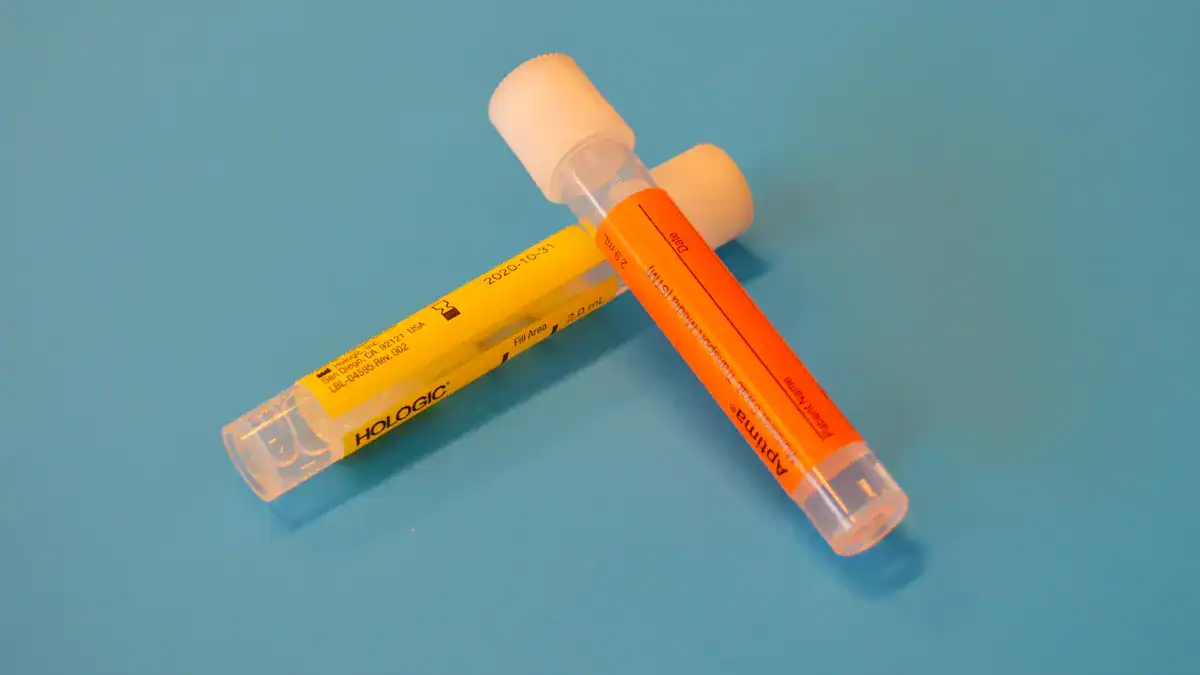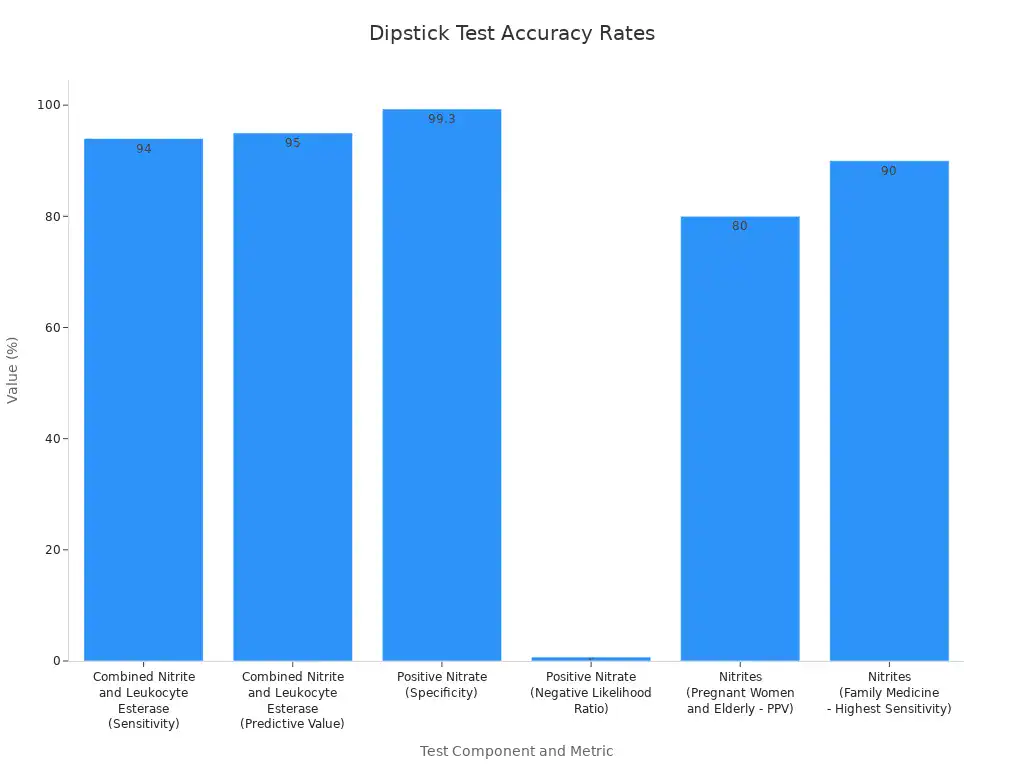
Receiving an “abnormal” and “urgent” urine test result can cause worry. This blog will demystify these results and guide readers on their meaning and next steps. An abnormal urine test result often signals conditions requiring immediate attention.
For instance, white blood cells in urine frequently indicate a urinary tract infection (UTI). High sugar levels in the urine can point to diabetes. These urgent results from a urinalysis help identify issues early.
Key Takeaways
Abnormal urine test results mean doctors found something unusual. These results often need quick medical attention.
A urine test checks for different things like blood, sugar, or infection signs. These can show problems with your kidneys, liver, or other body parts.
If your urine test is abnormal, see a doctor right away. They will explain what the results mean and plan your next steps.
Common urgent findings include blood in urine, high sugar, or signs of infection. These can point to conditions like UTIs or diabetes.
Always follow your doctor’s advice after an abnormal test. This helps you get the right treatment and stay healthy.
Urinalysis

What is a Urine Test
A urine test, also known as a urinalysis, is a common medical examination. It involves analyzing a urine sample to detect various substances and cells. This simple test provides valuable information about a person’s health. A standard urine test measures several components through different examination methods.
Macroscopic examination looks at color, clarity, odor, and specific gravity. Chemical evaluation uses test strips to check pH, glucose concentration, protein levels, ketones, bilirubin, urobilinogen, blood, white blood cells (leukocyte esterase), and nitrite. Microscopic examination identifies cells (red blood cells, white blood cells, epithelial cells), urinary casts, crystals, and organisms like bacteria.
Why Your Doctor Orders It
Doctors order urine tests for many reasons. They use these tests to screen for diseases, diagnose medical conditions, and monitor treatment effectiveness. A urine test helps diagnose a variety of medical conditions. These include urinary tract infections (UTIs), diabetes or prediabetes, chronic kidney disease, kidney or bladder stones, and even certain cancers.
It also helps identify bacterial or yeast infections, urinary tract disorders, and sexually transmitted infections (STIs). For example, the presence of bacteria or nitrites often indicates a UTI. High protein levels can signal kidney damage or heart failure. Glucose in the urine suggests diabetes.
Normal vs. Abnormal Findings
An abnormal urinalysis result does not automatically mean a medical condition is present. A healthcare provider can offer clarification. Normal urine typically appears clear and ranges from pale to dark yellow. Its specific gravity usually falls between 1.005 and 1.030.
Normal urine pH is between 5.0 and 7.0. The body excretes less than 100 mg of protein in urine daily. If urinalysis results show values outside these normal ranges, it indicates an abnormal finding.
For instance, a high number of white blood cells suggests an infection or inflammation, often a UTI. Cloudy urine often results from precipitated substances. Protein in urine can make it appear foamy. These abnormal results require further investigation and urinalysis interpretation by a medical professional.
Interpreting Urgent Results

Abnormal urine test results can signal problems with the kidneys, liver, pancreas, or heart. These urgent results require prompt attention. Understanding what each marker means helps individuals and doctors take appropriate action.
Blood in Urine: Hematuria
Hematuria means blood appears in the urine. This can be visible (gross hematuria) or only detectable under a microscope (microscopic hematuria). The presence of blood in urine is always a red flag result. It indicates an underlying issue. Many conditions cause hematuria.
These include urinary stone disease, such as kidney, bladder, or ureteral stones. A urinary tract infection (uti) or kidney infection (pyelonephritis) also causes blood in the urine.
Bladder inflammation, known as cystitis, is another common cause. Certain cancers, like those of the bladder, kidney, ureter, urethra, or prostate, can also lead to hematuria. An enlarged prostate (benign prostatic hypertrophy or BPH) often causes this symptom. Injuries to the urinary system, menstruation, endometriosis, chronic kidney disease, and sickle cell disease are other possible causes. People experiencing these symptoms should seek medical advice.
Protein in Urine: Proteinuria
Proteinuria means excess protein is present in the urine. Normally, the kidneys filter waste products but keep proteins in the blood. When protein leaks into the urine, it suggests the kidneys are not working correctly.
Protein in urine can make it appear foamy. Proteinuria can indicate various medical conditions. These range from temporary issues like dehydration or inflammation to more serious problems. Serious conditions include certain immune disorders, acute kidney inflammation (glomerulonephritis), plasma cell cancer (multiple myeloma), or kidney cancer.
Cardiovascular disease, preeclampsia in pregnant women, poisoning, trauma, and congestive heart failure also cause proteinuria. Doctors define proteinuria as urinary protein excretion greater than 150 mg per day.
Significant proteinuria, especially indicating glomerular malfunction, means more than 2 grams per 24 hours. An urgent referral is necessary if doctors suspect nephrotic syndrome. This occurs with proteinuria in the nephrotic range (ACR ≥ 250 mg/mmol or PCR ≥ 300 mg/mmol) or if serum abnormalities are present.
Glucose in Urine: Glycosuria
Glycosuria means glucose (sugar) is present in the urine. The kidneys usually reabsorb all glucose back into the bloodstream. Its presence in urine indicates high blood glucose levels or a decreased kidney threshold concentration.
This usually happens when blood glucose exceeds approximately 180 mg/dL. The primary cause of glycosuria is elevated blood sugar levels. Untreated diabetes is the most common reason. This includes Type 1 diabetes, Type 2 diabetes, and gestational diabetes.
In rarer cases, an intrinsic problem with glucose reabsorption in the kidneys causes glycosuria. This condition is called renal glycosuria. Fanconi syndrome is another rare condition where kidney tubules fail to properly absorb substances, including glucose. People with glycosuria often experience symptoms like increased thirst and frequent urination.
Infection Markers: UTI and Beyond
Cloudy urine often results from precipitated substances, but it can also signal an infection. Several markers in urine indicate a urinary tract infection (uti). Pyuria, which means white blood cells in the urine, is a common sign of infection.
The nitrite test, though a surrogate marker, has a high positive predictive value for uti. Combining pyuria with nitrite helps identify many culture-positive cases. Other conventional markers include leukocyte esterase. Novel biomarkers for uti include neutrophil gelatinase-associated lipocalin (NGAL), interleukins (IL-8, IL-6, IL1-β), and matrix metalloproteinase 9 (MMP-9). Urinary ATP and urine TREM-1 also indicate infection.
Common pathogens identified in urine cultures for uti include both Gram-negative and Gram-positive bacteria. Uropathogenic Escherichia coli (UPEC) is the most frequent cause for both uncomplicated and complicated uti.
Other bacteria causing uncomplicated uti include Klebsiella pneumoniae, Staphylococcus saprophyticus, and Enterococcus faecalis. For complicated uti, Enterococcus species, K. pneumoniae, and Candida species are common.
Other Urgent Markers
Beyond blood, protein, glucose, and infection indicators, other urgent results appear in urine tests. Abnormal pH levels can indicate kidney disease or a urinary tract infection. The presence of bilirubin and urobilinogen may suggest liver problems or issues with bile flow.
For example, elevated bilirubin in urine can point to hepatitis, cirrhosis, gallstones, or excessive red blood cell breakdown. Ketones are by-products of metabolism.
Their presence in urine suggests severe high blood glucose and potential ketoacidosis. This requires urgent treatment. Ketones can also indicate starvation or excessive alcohol consumption. Urine concentration, or osmolality/specific gravity, varies with hydration. It helps diagnose abnormal kidney function. These results provide crucial information about a person’s health and potential symptoms.
Types of Urine Tests
Doctors use different methods to analyze urine. Each method provides unique information about a person’s health. These urine tests help identify various conditions.
Dipstick Test: Initial Screening
A dipstick test is a quick and simple way to screen urine. A small strip with chemical pads dips into the urine sample. The pads change color, indicating the presence of substances like blood, protein, or nitrites. This test offers rapid results. However, these rapid results are not always definitive. Doctors must consult patients if rapid urine tests show abnormal findings.
Here is a look at the accuracy of some dipstick components:
Test Component(s) | Metric | Value |
|---|---|---|
Nitrite alone | Sensitivity | 23.31% |
Leukocyte Esterase alone | Sensitivity | 48.5% |
Blood alone | Sensitivity | 63.94% |
Leukocyte Esterase and/or Blood | Sensitivity | 72.28% |

Combining nitrite and leukocyte esterase shows a 94% sensitivity for predicting a UTI. This combination also has a 95% predictive value for a negative urine culture.
Microscopic Examination: Detailed View
A microscopic examination provides a detailed view of the urine sample. A lab technician places a drop of urine under a microscope. They look for cells, crystals, and other substances not visible to the naked eye.
This examination helps confirm findings from the dipstick test. It also identifies elements that the dipstick cannot detect. Specific cellular elements identified include:
Leukocytes (White Blood Cells)
Erythrocytes (Red Blood Cells)
Epithelial Cells (Transitional, Squamous, and Renal Tubular types)
Sperm
Urine Culture: Identifying Pathogens
A urine culture identifies specific bacteria or other pathogens causing an infection. Doctors order a urine culture when they suspect a urinary tract infection. This test grows any bacteria present in the urine sample in a lab. It helps determine the best antibiotic for treatment.
However, guidelines recommend against using pyuria or bacteriuria alone from a dipstick as criteria for diagnosing a UTI or giving antibiotics. Abnormal dipstick findings, like pyuria or bacteriuria, often lead to unnecessary urine cultures and inappropriate antibiotic use, especially in patients without symptoms.
Reflex urine cultures, which automatically trigger a culture based on specific urinalysis parameters, should be avoided in asymptomatic patients. They are useful for symptomatic noncatheterized patients in outpatient and emergency room settings. In infants and children, if a urine dipstick shows leukocyte esterase or nitrites, a follow-up urinalysis with a clean urine collection should be performed.
Next Steps: Seeking Treatment
Receiving abnormal urine test results often prompts concern. Understanding the next steps ensures proper care. People must recognize warning signs and seek timely medical attention. This leads to effective treatment and better health outcomes.
Recognizing Warning Signs
Certain symptoms signal potential health issues. These symptoms require immediate medical evaluation. For instance, changes in urination, such as increased frequency or foamy urine, can indicate kidney problems. Blood in urine (hematuria) is always a significant warning sign.
People might also experience fatigue, weakness, or swelling in their legs and feet. These symptoms often result from fluid buildup. Persistent itching and skin issues, loss of appetite, and nausea are other important symptoms.
High blood pressure can also point to kidney dysfunction. These symptoms suggest the body needs attention. For example, frequent urination, especially at night, can mean damaged kidney filters.
Swollen ankles and feet often result from sodium retention due to decreased kidney function. Muscle cramping can occur from electrolyte imbalances. Recognizing these symptoms helps individuals seek prompt treatment.
Importance of Medical Follow-Up
Medical follow-up is crucial after receiving abnormal urine test results. A healthcare provider can accurately interpret the findings. They establish a precise diagnosis and treatment plan.
Ignoring abnormal results can lead to worsening conditions. For example, an untreated urinary tract infection (uti) can spread to the kidneys. This causes more severe symptoms and complications.
Preparing for Your Appointment
Preparing for a doctor’s appointment helps ensure a productive visit. Patients should compile a list of their symptoms. They should note when symptoms started and how they have progressed. Inform the doctor about any medications, supplements, or recent dietary changes. Abnormal urine colors can provide important clues.
For example, urine color can change due to foods like beets or blackberries. Certain medications, such as rifampin or phenazopyridine, can also alter urine color. Liver disorders can cause dark brown urine. A urinary tract infection (uti) might make urine cloudy or milky.
Pseudomonas aeruginosa infection can even produce blue-green urine. This information helps the doctor determine the cause of abnormal results. The doctor can then recommend the correct treatment. They might prescribe an antibiotic if a bacterial infection is present. Discuss all concerns openly to receive the best antibiotic therapy and overall treatment.
Abnormal and urgent urine results signal issues needing attention, not panic. Key urgent findings include blood in urine, fever, extreme pain, or inability to urinate. These results require prompt medical evaluation. A healthcare professional provides accurate diagnosis and treatment. They guide individuals toward effective treatment. Readers should be proactive in health management. They must not hesitate to seek medical advice.



